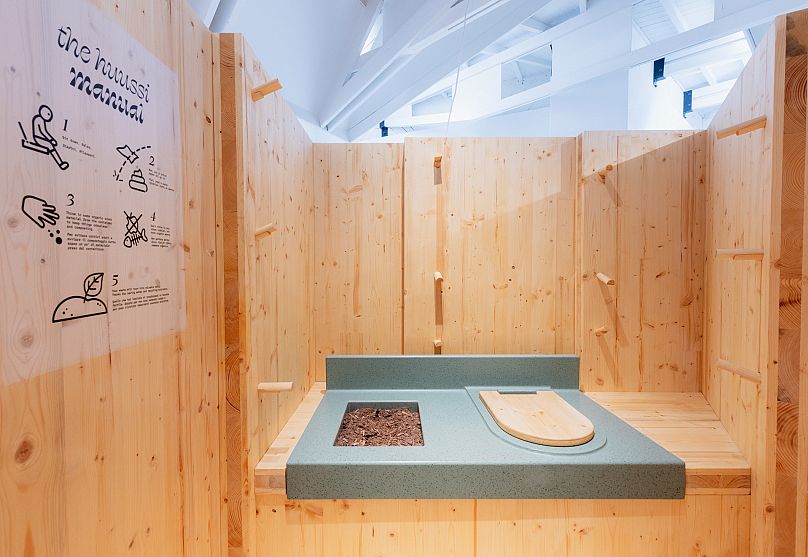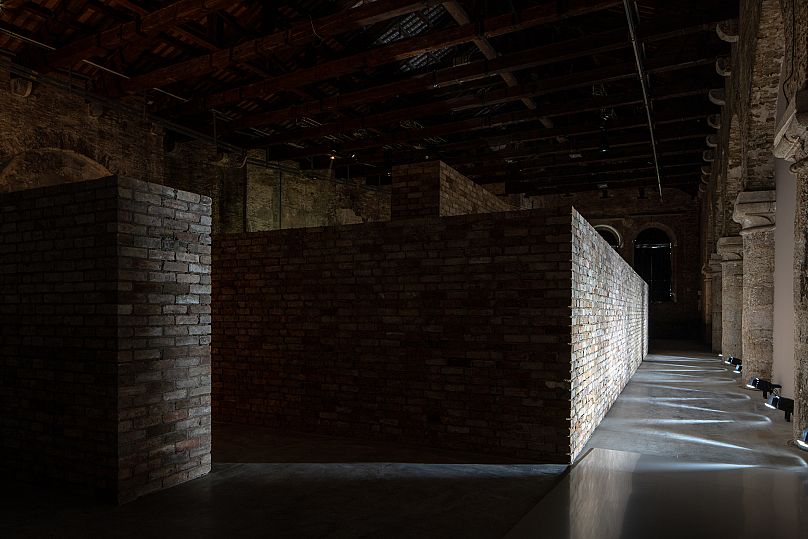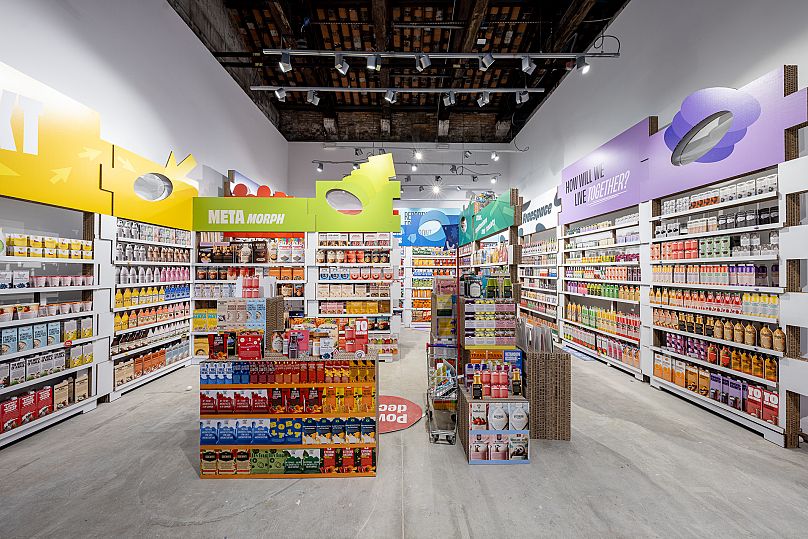Installations and exhibitions tackle topics of climate change, colonialism and indigenous culture.
This year’s Architecture Biennale in Venice is wacky, thought-provoking and inspiring. Curator Lesley Lokko, of Scottish-Ghanaian origins, has shone the spotlight on Africa with over half the participants from the continent or its diaspora.
Installations and exhibitions tackle topics of climate change, colonialism and indigenous culture.
But with so much extraordinary culture on display, a visit to the vast Biennale can be overwhelming. There are 27 pavilions in the Giardini and 22 in the Arsenale as well as 14 dotted through Venice.
Here’s our guide to the must-see exhibitions and pavilions at the 18th edition of the international festival.
Finland declares death to the flushing toilet
Finland’s contribution to the Biennale begins just outside the Alvar Aalto-designed pavilion with what looks like a Duchamp-esque conceptual sculpture.
In a rectangular pit, a broken ceramic toilet bowl is half buried in the earth. This is intended as a staged reconstruction of an archaeological excavation that “symbolically consigns the flushing toilet to history,” according to the Dry Collective group behind the project.
Inside the pavilion, the exhibition presents a Finnish sanitation solution for the future. In the centre is a wood panelled structure housing a huussi – a composting toilet used by thousands of Finnish people living in rural settings.
“We cannot live on a planet where billions of people use rapidly diminishing fresh water resources to flush their waste,” says curator Arja Renell.
“Huussi inspires and invites all professionals to start looking for alternative solutions which would better serve the world we inhabit today.”
Nordic Pavilion honours Indigenous architecture
The light-filled Pavilion of Nordic Countries is an aesthetic jumble of reindeer skin tents, logs carved into seating and wooden huts.
At the heart of the installation is artist and architect Joar Nango’s archive of books about Indigenous architecture collected over 15 years.
Girjegumpi: The Sámi Architecture Library is a social space which has already travelled to different locations in the Nordic region.
It invites visitors to use the pavilion as a reading room to learn about topics including Sámi architecture and design, ancestral building knowledge, activism and decolonisation.
Uzbek Pavilion leads visitors into a labyrinth
Pushing aside a black curtain, visitors to Uzbekistan’s pavilion in the Arsenale find themselves in a dimly lit space confronted with a brick-walled labyrinth.
The structure takes inspiration from the traditional building material of ancient fortresses known as qalas in the Karakalpakstan region, although the bricks themselves were reclaimed from the area around Venice.
The maze is also intended as a symbol of contemporary architecture having lost its way as buildings continue to be designed without consideration for a warmer future.
In a few of the walls, a spotlight shines on brilliant blue ceramic tiles. These enamelled inserts were made by Uzbek artist Abdulvahid Bukhoriy, one of the few remaining craftsmen of the blue Bukhara technique.
Brazil Pavilion wins the Golden Lion
In Brazil's national pavilion, curators Gabriela de Matos and Paulo Tavares deconstruct the founding myth of Brasília, a capital built in “the middle of nowhere.”
As they explain through text and maps, the area was actually home to Indigenous and Quilombola populations who were driven out by colonisers.
In a second room, a floor and structures made from earth (the exhibition is titled “Terra [Earth]") immerse visitors in the fundamental, ancestral materials of Brazil.
Latvia sets up shop at the Biennale
By far the brightest pavilion, Latvia’s installation is a celebration of its tenth year at the Architecture Biennale with a “supermarket of ideas.”
There’s a check out at the front while the rest of the room is divided into aisles stacked with colourful products.
Shaped like different supermarket items - detergent, tinned tomatoes, jam - flat cutouts present the pavilion concepts from the last 10 Biennale shows.
The curators used AI technology to feed in content about past exhibitions and short descriptions were then printed onto over 500 items to line the supermarket’s shelves.
The supermarket has a distinct pop art vibe, recalling the critiques of consumption by artists like Andy Warhol.














